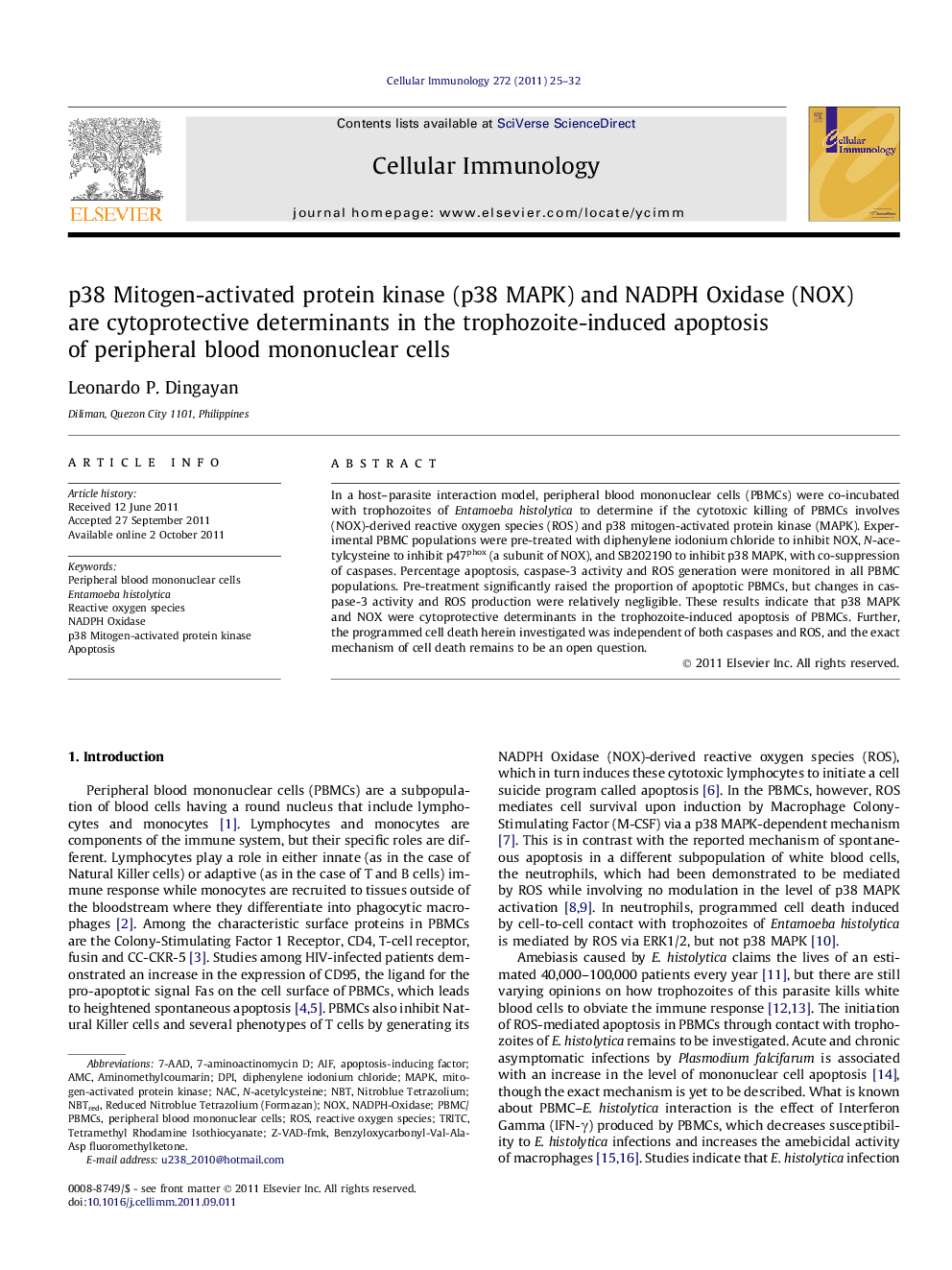| Article ID | Journal | Published Year | Pages | File Type |
|---|---|---|---|---|
| 2167216 | Cellular Immunology | 2011 | 8 Pages |
In a host–parasite interaction model, peripheral blood mononuclear cells (PBMCs) were co-incubated with trophozoites of Entamoeba histolytica to determine if the cytotoxic killing of PBMCs involves (NOX)-derived reactive oxygen species (ROS) and p38 mitogen-activated protein kinase (MAPK). Experimental PBMC populations were pre-treated with diphenylene iodonium chloride to inhibit NOX, N-acetylcysteine to inhibit p47phox (a subunit of NOX), and SB202190 to inhibit p38 MAPK, with co-suppression of caspases. Percentage apoptosis, caspase-3 activity and ROS generation were monitored in all PBMC populations. Pre-treatment significantly raised the proportion of apoptotic PBMCs, but changes in caspase-3 activity and ROS production were relatively negligible. These results indicate that p38 MAPK and NOX were cytoprotective determinants in the trophozoite-induced apoptosis of PBMCs. Further, the programmed cell death herein investigated was independent of both caspases and ROS, and the exact mechanism of cell death remains to be an open question.
► Co-suppression of caspases and NOX, p47phox, or p38 MAPK raised % apoptosis. ► % Apoptosis was negatively correlated with caspase-3 activity. ► ROS generation and caspase-3 activity were not interdependent. ► ROS did not have a role in PBMC apoptosis in the present case. ► Trophozoite-induced apoptosis of PBMCs was independent of both ROS and caspases.
